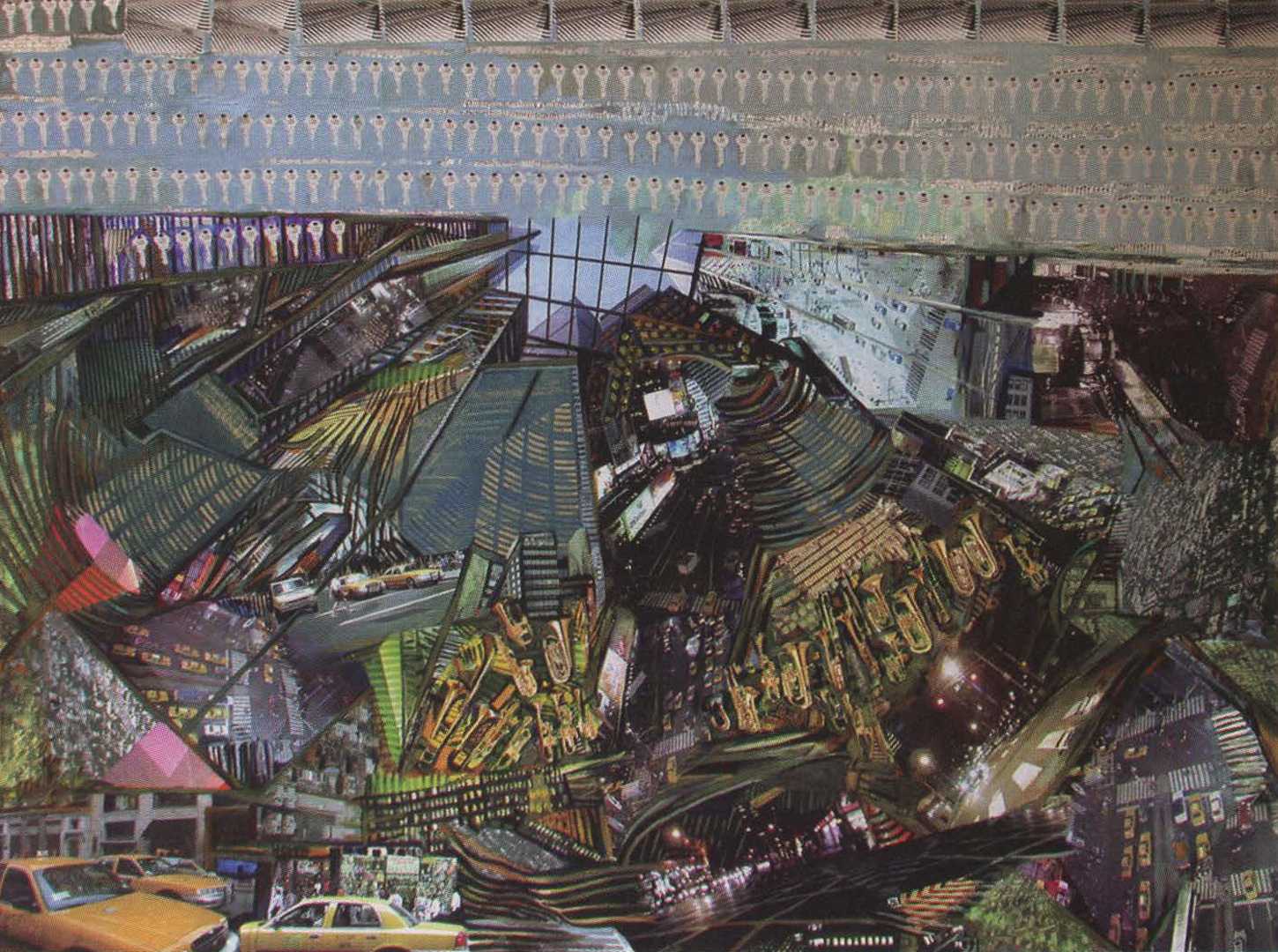Anna Ursyn: Pitch and Volume
Artist(s):
Title:
- Pitch and Volume
Exhibition:
Creation Year:
- 2004
Medium:
- Vl'v
Size:
- 24 inches x 32 inches
Category:
Artist Statement:
Acutely aware of order, I try to examine what technological and human worlds have in common. Natural order, revealed randomly and regularly, infuses several levels of both worlds: some determined by humans, through buildings, windows, even cars parked in lots, and some determined by nature, through trees, branches, and leaves. Natural order guides our understanding of big datasets related to network analysis, when we employ physical analogies of the data, render the data graphically, explore them “by eye” and interact in real time. My task is to juxtapose the regularity of nature with human constructions, both physical and intellectual. The big city, for example, combines how humans affect their environment and how a city metaphor reflects rhythm and organization of big datasets, and makes data mining easier. Observers – whether artists or technology experts – perceive such relationships in different lights and from different perspectives and different points of view. Processes in nature and events in technologies inspire my images. Such processes also support my instruction in computer art and graphics, where students learn to create artwork and demonstrate what they understand of scientific concepts.
Pitch and Volume
Let’s listen to the city music. Pitch our voices in key with others without confusion of tongues and meaning. Let’s hum a tune and rejoice in laugh when we stay set in a traffic jam.
Technical Information:
Typically, my creation of art runs through stages. First, I sketch a general outline for the bigger composition, then I draw abstract geometric designs as starting points for executing my computer programs. Computers then convert my ideas into lines, with codes takin g shape as iconic images of animals (a horse, for example) or symbolic images of humans (a warrior, for example). Some of my projects are two-dimensional; others are three-dimensional, depending on my composition’s final dictates. Programmed data flow electronically into the final artwork. To vary color combinations, I convert computer printouts into photo
silkscreens, for WYSIWYG, and photo lithographs, for reversed
images. Then I add painterly markings to finish the composition. To compose, I use repetition of lines, shapes, and forms; select color combinations; transform light intensity ; apply grid patterns and moire effects. To ensure unity, the computer’s memory regroups recurrent elements, contrasting order and chaos. Computer programs shape my wooden and mixed-media sculptures. The wireframed designs of 3D guide construction while images – multiplied, superimposed, transported – offer illusions of time and
movement. I create programs in Fortran 77 to repeat lines and transform, distort, and manipulate images by scaling, rotating, slanting, and changing perspective. Then I add photographic content using scanners and digital cameras.





